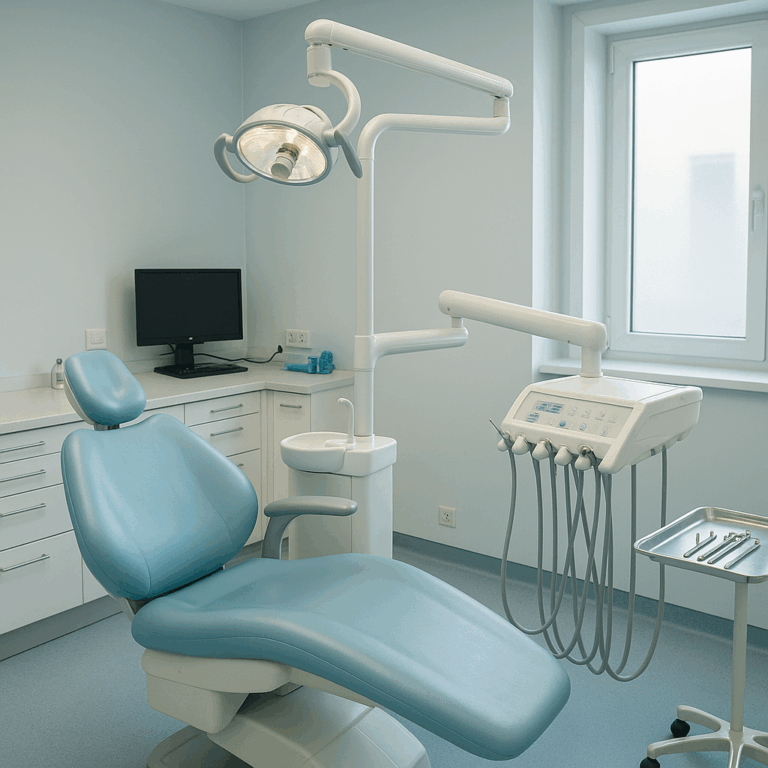Does Insurance Cover Invisalign? Real Costs & FSA Tips
Quick Insights: Does Insurance Cover Invisalign?
- Most dental insurance plans cover Invisalign as orthodontic treatment—usually 25% to 50% of total cost.
- Typical lifetime orthodontic benefit ranges from $1,000–$3,000 per person, not annually renewable.
- Adult Invisalign coverage is less common—verify your plan’s age limits and exclusions.
- HSA/FSA funds and in-house financing can bridge gaps in insurance coverage.
- Coverage varies widely—use provider tools or contact Hotaling to decode your exact benefits.
Introduction
Many people are surprised to learn that Invisalign may be covered by dental insurance—but only partially. While clear aligners are often marketed as a premium cosmetic solution, insurers increasingly view them as medically necessary orthodontic treatment, especially for bite correction or crowding. However, coverage varies significantly by provider, plan design, and even patient age.
What Is Invisalign and Why Is It So Popular?
Invisalign is a clear aligner system that gradually shifts teeth using a series of custom-made trays. It’s often chosen by adults and teens who want a less noticeable, removable alternative to traditional braces. The aligners are transparent, easy to clean, and custom-fitted via 3D scanning.
Treatment typically lasts 6–18 months and is used to fix overbites, underbites, crowding, spacing, and more. It’s especially popular among professionals and older patients due to its discreet appearance and flexibility.
Does Dental Insurance Cover Invisalign in 2025?
Yes—most dental plans that include orthodontic coverage will help pay for Invisalign. However, they usually reimburse only a portion of the cost, up to a lifetime maximum. This amount ranges from $1,000 to $3,000 depending on your policy.
The key caveat? Many plans limit orthodontic benefits to dependents under 19. Adult coverage exists but is far less common. Some carriers require pre-approval or documentation that the treatment is medically necessary, especially for bite correction or jaw alignment issues.
Types of Insurance That May Cover Invisalign
- Dental PPO Plans – Most common, flexible on provider choice
- Employer-Sponsored Group Plans – May include orthodontic riders
- Dual Coverage – Maximizes benefits if you’re insured by both your and your spouse’s plan
Plans from trusted Hotaling underwriting partners such as Aetna, Guardian, Cigna, and MetLife may offer partial Invisalign coverage. However, exclusions and limits vary, so reviewing your specific plan is crucial.
How Much Will Insurance Pay for Invisalign?
Here’s a breakdown of what major insurers typically offer:
| Provider | Coverage | Lifetime Max | Adult Coverage? |
|---|---|---|---|
| Delta Dental | Up to 50% | $2,000 | Limited |
| Aetna | 30–50% | $2,500 | Case-by-case |
| Guardian | 25–40% | $1,500–$2,000 | Sometimes |
| MetLife | 50% | $3,000 | Usually only dependents |
These amounts are not annual benefits—they are lifetime caps, meaning once the insurer pays the max amount, you are responsible for the remainder.
Why Doesn’t Every Plan Cover Invisalign?
Some insurers still classify Invisalign as cosmetic, despite its orthodontic function. Others prefer to cover only metal braces or have strict age limitations. Hotaling clients often find that coverage depends on:
- The specific group plan negotiated by their employer
- Whether they are listed as a dependent vs. primary
- Whether the provider is in-network
Our experts frequently help clients submit pre-treatment estimates and navigate insurer pushback when medical necessity needs documentation.
What If My Plan Doesn’t Cover Invisalign?
Even if you don’t have orthodontic benefits, you still have several ways to reduce the cost:
- Use your FSA or HSA to pay with pre-tax dollars
- Ask your orthodontist about monthly payment plans
- Apply for third-party financing like CareCredit
- Join a discount dental plan for cash savings
Hotaling often advises on strategies that combine these options, helping you stack tax savings with partial reimbursements and competitive provider pricing.
Can I Use My FSA or HSA for Invisalign? How It Works
Yes, you can use your Flexible Spending Account (FSA) or Health Savings Account (HSA) to pay for Invisalign, as long as the treatment is considered medically necessary. This makes Invisalign one of the few orthodontic treatments that qualifies under IRS rules for tax-advantaged accounts.
How FSA/HSA Eligibility Works
- IRS Qualified Expense: Invisalign qualifies under IRS Publication 502 as a deductible dental expense when prescribed to correct dental alignment, bite issues, or crowding—not purely cosmetic purposes.
- Letter of Medical Necessity: Your orthodontist may need to provide a note or treatment plan indicating the health-related need for Invisalign. Some FSA/HSA providers require this documentation for approval or reimbursement.
- Receipts & Proof: Always save your payment receipt and itemized treatment invoice. If you’re audited or questioned by your FSA/HSA administrator, you’ll need them to prove eligibility.
Contribution Limits for 2025
- FSA: Up to $3,200 per year (use-it-or-lose-it applies)
- HSA: Up to $4,150 for individuals and $8,300 for families (rolls over annually)
Note: You cannot use both FSA and HSA for the same expense. That’s considered “double-dipping” and may result in IRS penalties.
Pro Tip: Combine FSA/HSA with Insurance
If your insurance covers part of your Invisalign treatment, you can apply FSA or HSA funds to the uncovered balance—including copays, deductibles, or any portion over your plan’s lifetime ortho maximum.
Hotaling advisors frequently guide clients through this process, helping them maximize every eligible tax advantage and avoid compliance missteps.
Tips to Maximize Coverage for Invisalign
- Submit a pre-treatment estimate before beginning any work
- Work with an in-network orthodontist to avoid out-of-network penalties
- If you have dual insurance (through spouse + job), coordinate benefits
- Ask HR if your plan allows for supplemental dental coverage
Experienced providers know how to help with claims, appeals, and documentation—especially when demonstrating that Invisalign is correcting a medical issue, not just cosmetic alignment.
Case Studies
👧 Case Study: Nakia, 21‑Year‑Old College Student (Female)
Background: Nakia is a 21‑year‑old college student from Chicago who received Invisalign aligners for minor dental corrections.
-
Total Treatment Cost: ~$3,000
-
Insurance Coverage: $1,500
-
Out‑of‑Pocket: $1,500
-
Result: “My Invisalign treatment was quick. I don’t know what took me so long to start! Now I have the smile I always wanted.”
📝 Takeaway: Even younger adults can benefit from dual parental or personal insurance plans, significantly cutting actual expenses.
👦 Case Study: Reddit User with Delta Dental PPO (Male)
One Reddit user in California shared:
“I have Delta Dental and the total for Invisalign was $5,400, Delta Dental paid out $1,800 [lifetime ortho max], so out‑of‑pocket I had to pay about $3,800.”
This real testimonial demonstrates:
-
Delta Dental provided partial coverage up to a $1,800 lifetime maximum.
-
The remaining cost—approximately 70% of total—was covered by the patient themselves.
🧒 Case Study: Emerald G., 16‑Year‑Old Teen (Female)
Background: Emerald G. from San Diego, a teen with crowding and a canine misalignment.
-
Treatment Time: Originally 9 months; extended to 36 months due to COVID
-
Total Cost: $5,490
-
Coverage & Payments: Down payment $1,700 + monthly payments of $475
-
Result: “Invisalign has been the best investment in myself. … I love my smile and shine it confidently.”
📝 Takeaway: Even when insurance only covers a portion, flexible payment plans help families manage the remainder.
FAQs About Invisalign and Insurance
Do any insurance companies cover Invisalign?
Yes, major dental insurers like Aetna, Delta, and Guardian often do—usually under orthodontic benefits.
How can I tell if Invisalign is covered by my plan?
Check your dental plan’s benefit summary or contact Hotaling for a review. Your provider can also submit a pre-treatment estimate.
Can adults get Invisalign coverage?
Some plans allow it, but many cap orthodontic benefits to dependents under 19. Always verify age limits.
What’s the typical out-of-pocket cost for Invisalign with insurance?
Expect to pay $2,000–$4,000 after insurance, depending on your plan and provider.
Is Invisalign considered cosmetic by insurers?
Sometimes—but documentation of medical necessity can help override this classification.
Need Help Decoding Your Invisalign Benefits?
Every insurance policy is different. Hotaling Insurance helps clients nationwide understand their dental coverage, coordinate benefits across carriers, and find smart ways to pay for Invisalign.
As a trusted broker partnered with Guardian, Aetna, Delta Dental, Hartford, Chubb, and more, we understand the landscape—and we advocate for our clients.
Fill out the form below for us to reach out to you! Or hit the contact us button


